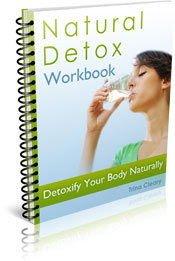|
Benefits of Spirulina
The benefits of spirulina almost seem too good to be true. Spirulina is a highly energising, highly digestable superfood that comes close to providing everything the human body needs. It’s so super that NASA has even selected spirulina as one of the most important space foods. What is spirulina?Spirulina is a type of single-celled blue-green algae that grows in warm, watery and highly alkaline environments. The spirulina plant is shaped like small spirals and is about 0.5mm long, making it easier to harvest than most other algae. Spirulina has been called the ‘simplest vegetable on earth’ as it lives on water and sunlight alone. Living directly on sun energy, spirulina gains its vitality from sunlight collected in chlorophyll. It’s the chlorophyll in spirulina that causes its dark green colour. Chlorophyll is only one molecule different from human blood. Not only is spirulina extremely nutritious, but it consumes comparatively low levels of energy and water during production. Spirulina has been touted as part of the solution to the world’s food shortage problems as large harvests can be efficiently produced from small areas. As such, spirulina may be one of the answers to growing food in a more environmentally friendly, sustainable way. Spirulina nutritionSpirulina is high in protein, 60-70% depending on growing conditions. It contains the eight essential amino acids, and 10 of the 12 non-essential amino acids. Note that amino acids cannot be created by the body, but have to come from our diet, and are the building blocks of protein. Spirulina is a wholefood that beats synthetic vitamins hands down. It contains 9 important vitamins and 14 minerals bonded to the amino acids for easy assimilation. It’s high in calcium and iron, magnesium and potassium and is an excellent source of B12. Spirulina is also a good source of the essential fatty acid GLA. Benefits of spirulinaThere’s a long list of spirulina benefits to go with its nutrient dense profile. Spirulina health benefits include energy production, cancer prevention, enhanced immune function, detoxification, cleansing, alkalising, cholestoral lowering, liver-protection and anti-inflammatory effects. The nutrients in spirulina are easily digested and assimilated by the body. Spirulina is so easy to digest because it is surrounded by a thin membrane of complex sugars which dissolve easily in the stomach. The chlorophyll in spirulina cleanses and alkalises the body. Its highly alkalising properties rid the body of acid waste, helping maintain an acid-alkaline balance that prevents minerals being stripped from the body. Spirulina is also high in beta-carotene, an important antioxidant that has been indicated to lower risk of cancer. It has more than 14 times more beta-carotene than carrots. This nutritious ingredient is also good for eyes and vision. Some people claim spirulina gives them a natural, almost clairvoyant high. Danger of spirulinaSpirulina is not dangerous if used in recommended dosages. However, the dosage makes the poison, overdo it and anything can have negative side effects. In excess, the high levels of beta-carotene in spirulina can lead to a vitamin A overdose, which is toxic to the liver. Watch out for symptoms of itchiness if you’re consuming a lot of spirulina and cut back your dosage appropriately. On the other hand there are anecdotal stories about ancient Japanese philosophers who relied on spirulina as their sole food for years with no negative effect. If taken in too high a dosage initially spirulina can cause detoxification symptoms due to its strong detoxifying properties. Start with a small dosage (1 tspn daily) and build up to a maximum of 4 tspns daily. Some spirulina side effects may include upset stomach, nausea, constipation, diarrhea, slight fever, headaches and perspiration through detoxification. Drink extra water, especially when starting out. It may be good idea to take spirulina in the morning as it can cause the body to burn excess fats, possibly causing excitement and sleeping problems. Tips for buying spirulinaThe quality of spirulina is affected by the amount of sunlight available as it grows, the season, surrounding pollution and the minerals and nutrients available in the water. Heating and time delays during the manufacturing process can also reduce its quality. Harvesting to packaging must be fast to guarantee nutrition. Spirulina should be packaged in oxygen resistant packaging to resist the degradation of oxygen-sensitive beta-carotene. Buy smaller packages in order to reduce the product’s exposure to oxygen each time the bottle is opened. To get the full benefits of spirulina, take care to purchase 100% organic spirulina without additives. Check that you’re buying from a reputable company that provides a reliable nutritional analysis. Spirulina dosageStart with a small dosage (1 tspn daily) and build up to a maximum of 4 tspns daily. Personally I find I can get the benefits of spirulina without taking it every day. I like to alternate my superfoods. Spirulina is my current favourite though, and I have it in smoothies at least twice a week. ½ teaspoon daily for children 5-12 years old. Back to Superfoods from Benefits of Spirulina
Back to Healthy Eating Guide home from Benefits of Spirulina
|
Are you as healthy as you can be?
Take action to lift your energy and vitality levels beyond recognition.
Focus on
building healthy eating habits for just one month with
Veg Up and you’ll enjoy the effects for years. You will amaze yourself when you see how much more you can achieve.
More Growing Raw
Newsletter
Be sure to subscribe to "More Growing Raw" newsletter to receive monthly healthy eating tips, Growing Raw news and updates.
Most Popular Articles
- Green Smoothie Health
- Raw Food Health Levels
- Growing Vegetables in Containers
- Healthy Eating Plans
- List of Healthy Food to Always Eat Organic
- Growing a Vegetable Garden in a Polytunnel
- All Natural Detox Diet
Does your body need a fresh start?
Brighten up with all natural detox routines that give your body a cleansing push towards healthier patterns.
Learn how to
detoxify your body naturally. Your body is smart enough to clean itself without expensive detox pills and potions.








